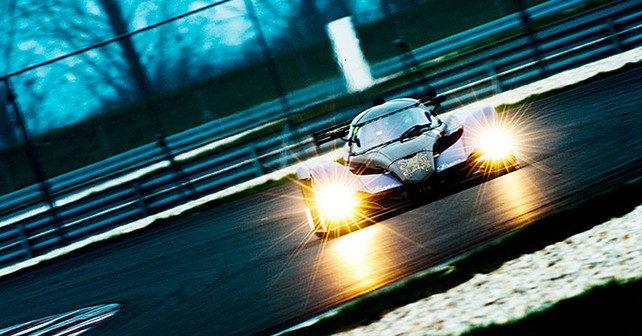
A racecar for the track and a racecar for the road – that’s how we’d describe the R1. Praga, keep up the good job!
An old name in the world of car manufacturing, Praga was founded in Czechoslovakia in 1907 and became a major automaker until the end of World War II. Post which its factories were shut down by the country’s communist government. In the year 1996, Praga was reborn. Having graduated to making go-karts today and handling engineering aspects for race cars, it was only time when Praga decided that they want to make their own car for the track.
It’s an age old story, a small company starts building a racing car around an engine that is borrowed from a known car manufacturer and turns the tables for the best. We’ve seen the Ariel Atom or even the Caterham for that matter borrowing engines from manufacturers and making blistering fast cars that make your eyes pop out. Then again you expect the British to do that and not the Slovakians. But indeed our preconceived notions are thrown down the gutter as the Slovakians have been able to make this car in a small village called Orechova Poton. The name of the village might ring a bell as this place is home to the Autodrom Slovakia Ring, a track built in 2009 that has hosted FIA World Touring and GT1 championship races. No wonder they didn’t have to go far looking for inspiration.
The result of this cumulative research is what you see in the pictures above. Christened as the Praga R1, believe it not, it is not the company’s first car – it is, in fact, it’s third. It is only after the R4 and the R4RS, did Praga venture out to make a car that was meant only for the track. Mind you, Praga Racing says that the earlier two cars are road ready if required at any point in time. So, would you like the Praga R1 to be your beer, which will make it part of your everyday life or the occasional champagne which you’ve saved for a special occasion?
Whatever your selection, one has to admit that the Praga R1 looks more like a track car than a road car. Imagine yourself driving through the streets trying to avoid scratching the carbon splitter. Oh, that will require some nerves. But to tell you the truth, it does look phenomenal and its custom monocoque design exposes the front control arms and the wheels, which speaks volumes of its stylistic and aerodynamic capabilities. The Formula one style nose, too, can’t be ignored as it does give the car a more aggressive and sporty stance.
Now you might think with all this design it got heavier, but no it hasn’t. Thanks to its carbon fiber chassis and carbon and Kevlar bodywork, it weighs only 590 kilograms which is technically less than half the weight of an average hatchback in India. They have sorted out the weight then, but what about the power? It gets a mid-mounted 2.0 litre four cylinder engine that is used in the Formula Renault. This engine churns a hefty 210bhp and a torque of 220Nm at 4500rpm. This F4R 832 engine features a Cosworth / Pectel ECU with traction control and powers the rear wheels. Mated to a Hewland six-speed sequential gearbox placed in the rear, it also boasts of pneumatic paddle shifts and a ZF Sachs twin-plate clutch. In addition to all of that there’s a fully adjustable double-wishbone aluminum suspension all around and the AP Racing discs with four-piston calipers ensure that the braking is in check.
This straight-out-of-the wild looking Praga R1 conforms to all FIA safety regulations but if demanded can accommodate a passenger seat and front lights, but that is strictly left to the wishes of the owner. This one-seater (for the track) R1 clearly will be a fun thing to drive and though Praga says that the engine life is 10,000 kilometers before it’ll have to be rebuilt, it’s worth every kilometer of it because we are sure that all the 10,000 will be spent around a track burning rubber. That’s a lot of laps, then!

















Write your Comment